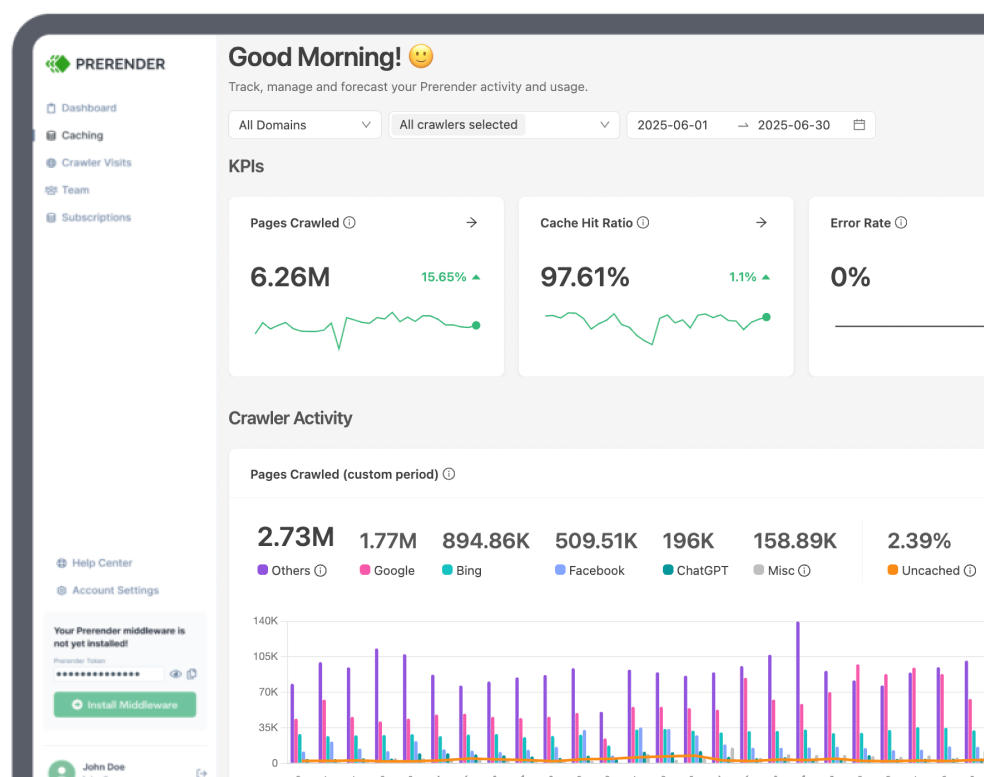Google provides users with the best possible answer to their queries—it’s what they do.
And to keep their spot as the reigning search engine, they analyze over 200 ranking factors in their algorithm. But since there are over 200, which are the most important Google ranking factors for 2025?
Focusing on them all will only overwhelm your team, so you must prioritize tasks and strategies to maximize your resources. This comprehensive guide—backed by the latest industry research—covers that.
TL;DR: Google’s Top 9 Ranking Factors
- Content quality and depth: match search intent, provide original insights, and add structure for readability.
- Domain Authority and trustworthiness: build high-quality backlinks and demonstrate expertise, especially for YMYL topics.
- Site speed and performance: optimize Core Web Vitals, minimize JavaScript bloat, and prioritize mobile performance.
- Site architecture: create a crawl-friendly structure with logical categories and strong internal linking.
- Site security: use HTTPS to protect user data and earn trust.
- Keyword optimization: use keywords strategically in titles, URLs, headings, and throughout the content.
- User experience (UX): ensure fast, mobile-friendly, accessible pages with smooth navigation.
- Schema markup and structured data: dd context with schema to enhance visibility in SERPs.
- Brand and social signals: grow brand awareness and trust through mentions, searches, and user engagement.
1. Content Quality and Depth
Content quality is crucial for ranking in Google, and it’s obvious as to why when you understand its role in the search engine ecosystem. The reality is that if Google started to promote bad content, people would flood to its competitors. So, Google makes a lot of efforts to provide the best results in its index.
It’s still the foundation of Google’s ranking algorithm, particularly after the 2024 updates that pushed down low-value content while promoting “helpful” and authoritative pieces. With the top 10 positions on Google averaging around 1,447 words, it’s clear that thorough, valuable content consistently beats out its superficial counterparts.
Although content quality might seem somewhat subjective, it all comes down to four factors:
Search Intent Alignment
When you ask people about quality content, the answer is always useful, providing value, or practical, which are all true. At the end of the day, all these definitions mean one thing: satisfying the search intent.
Behind every query, there’s an intention. The searcher wants to solve a problem or learn about a specific topic, and when your content matches this intent, it creates value.
If you search “latest ranking factors” in Google, do you want to read a page about optimizing a website, or do you want a list of ranking factors you should focus on?
Search intent is about understanding the searcher’s core need and creating content that fulfills this need.
Content Structure and Readability
The second signal of quality content is its structure.
Well-structured content is easier to read and understand (for both humans and search engines), so Google will look for these elements to ensure you’re providing a good reading experience:
- Good use of headers and subheadings (H1, H2, H3…) to divide the page into sections
- Bullet points and numbered lists
- Images and videos breaking down long blocks of text
Using the proper structure will also help visitors find pieces of information faster while making them engage with your content longer.
On-Page Elements
Of course, Google can’t read your content as normal humans would. So, it’s important to provide as much help as possible by optimizing on-page elements, such as:
- Title tags
- Meta descriptions
- Headings
- Primary keyword in the opening paragraph
- Image alt texts
- Anchor texts (for both external and internal resources)
- URLs
These elements will help Google understand and categorize your content better.
Content Uniqueness and Originality
Of course, high-quality content has an original angle that separates it from the rest of the competition. After all, if your page provides the same experience as what’s already ranking, why would Google choose yours? Google rewards pages that provide a better experience than what’s already out there and heavily penalize plagiarism.
Note: this also means we need to avoid duplicate content issues, as Google could easily flag our pages, hurting not only those flagged but the entire domain.
| Bonus Tip Another indicator of quality content is freshness. Keeping your content up to date using the latest statistics, fresh information about your target topic, and reworking now irrelevant information is crucial to boosting your organic performance. Freshness is even more important for time-sensitive keywords. For example, Google prioritizes web pages covering the latest developments and trends for health-related terms, as the most up-to-date information and statistics will greatly benefit the end user. |
Resource: Website Optimization For Humans vs. Bots
2. Domain Authority and Trustworthiness
Google prioritizes trustworthy, authoritative content—especially on topics that impact users’ money, health, or safety.
Here’s how your site can build trust and authority:
Earn High-Quality Backlinks
When reputable websites link to your content, Google sees it as a sign that your information is accurate and valuable.
- Focus on backlinks from authoritative domains.
- Avoid low-quality or spammy links, which can hurt your credibility.
Establish Topical Authority
Google rewards sites that demonstrate deep knowledge in a specific subject area. That’s where topical relevance and content clustering come in.
- Create topic clusters that comprehensively cover a subject.
- Use internal links to connect related content.
- Align your content with related keywords and questions users ask.
Align with E-E-A-T and YMYL Standards
Google’s E-E-A-T (Experience, Expertise, Authoritativeness, Trustworthiness) framework is especially important for YMYL “Your Money, Your Life” topics, which measures how qualified your site is to offer advice or insights.
- Demonstrate real-world experience and credentials.
- Provide clear author bylines and sourcing for claims.
- Keep content accurate and up to date.
Resource: 6 Startup Unicorns With the Best SEO Strategy in 2022
3. Site Speed and Performance
Google has made it clear: user experience is a ranking factor, and site speed plays a big role in that. If your pages are slow to load or frustrating to interact with, you’re likely to lose both visitors and rankings.
Google Uses Core Web Vitals to Measure Performance
Rather than just raw load time, Google now uses Core Web Vitals:
- Largest Contentful Paint (LCP): how long it takes for the main content to load.
- First Input Delay (FID): how fast the page responds to the first user interaction.
- Cumulative Layout Shift (CLS): how visually stable the page is as it loads.
These metrics help ensure your pages load quickly and feel responsive and stable to users.
JavaScript Is Often the Bottleneck
One of the biggest performance challenges for large or interactive websites, especially on mobile, is JavaScript. It’s essential for dynamic functionality, but poorly optimized scripts can delay interactivity and hurt rankings.
Some practical ways to improve JS performance:
- Defer or lazy-load non-critical scripts.
- Minify and combine files.
- Reduce third-party script usage.
- Use server-side rendering or prerendering for JavaScript-heavy content.
Improving how your site handles JavaScript often results in immediate speed gains—and improved rankings.
Mobile-Friendliness Matters
Since Google moved to mobile-first indexing, mobile performance has become even more important. That means:
- Your site should be fully responsive.
- Interactive elements must be easy to use on smaller screens.
- Page load speed on mobile devices needs extra attention.
If your site underperforms on mobile, it won’t rank well—regardless of how it performs on desktop.
| Not sure what’s blocking your site from ranking? Run a free SEO audit to spot issues with JavaScript rendering, crawlability, Core Web Vitals, and more. |
4. Site Architecture
Site architecture refers to how your website is organized and how individual pages are linked together. It plays a major role in how easily Google can crawl and index your content—and how users navigate it.
Why It Matters
Before your content can rank, it needs to be found. A messy or shallow architecture makes it harder for Google to:
- Discover all your pages.
- Understand how your content fits together.
- Evaluate which pages are most important.
Good architecture, on the other hand, helps with faster indexation, better topic clustering, and more efficient internal linking.
How to Build a Crawl-Friendly Structure
Start by organizing your content into logical categories and subcategories. Plan out your site navigation early, and aim to keep important pages within three clicks of the homepage.
Use internal links to:
- Reinforce topic relationships.
- Guide users deeper into your content.
- Distribute page authority.
This approach, often referred to as information architecture, is especially important for large sites with lots of content to organize.
5. Site Security
Security might not be the flashiest SEO topic, but it’s still a core ranking signal, especially for sites that handle sensitive data.
HTTPS Is the Standard
Google expects all websites to use HTTPS encryption by default. It ensures data exchanged between your site and users is encrypted and secure. Without it, your site may be flagged as “Not Secure” in browsers—and you could lose trust, traffic, and rankings.
HTTPS is critical if your site:
- Handles login credentials.
- Accepts credit card payments.
- Collects personal data (like emails or addresses).
- Offers membership or gated content.
Even if your site is mostly informational, switching to HTTPS is considered best practice and signals trust to both users and Google.
6. Keyword Optimization and Placement
Yes, Google is much smarter today than a decade ago—but keywords still matter.
Keyword optimization helps search engines understand the topic of your content and determine whether it’s relevant to a user’s query. Stuffing keywords randomly across your page won’t do you any favors. Instead, focus on strategic placement and natural usage.
Here’s how to optimize for keywords effectively:
- Target a primary keyword that aligns with user intent.
- Include that keyword in key on-page elements: the page title, URL, H1, and intro paragraph.
- Use semantically related terms (this is especially important in AEO) throughout the content to add context.
- Avoid keyword stuffing or awkward phrasing that hurts readability.
Today’s SEO is more about relevance than repetition—so place keywords where they support clarity, not where they interrupt it.
7. User Experience (UX)
Google doesn’t just rank content—it ranks experiences.
If users bounce quickly, struggle to find what they need, or don’t engage, it clearly signals that your page didn’t meet expectations. That’s why UX is an indirect yet essential ranking factor. It influences how long users stay, how deeply they explore, and how often they return.
Key UX elements Google indirectly evaluates include:
- Clear site navigation and intuitive layout.
- Fast-loading and mobile-friendly pages.
- Accessible design, including font size and contrast.
- Minimal intrusive elements like popups.
Resource: 6 Best Mobile SEO Tools to Boost SEO and User Experience.
8. Schema Markup and Structured Data
Schema markup (structured data) helps Google understand and display your content more attractively in search results.
By using schema, you give context to your content: is this a recipe, a product, an event, or a review? That clarity improves how Google interprets the page, and it can lead to rich results like star ratings, FAQs, or product prices.
Use schema to mark up key elements such as:
- Articles and blog posts.
- Products, reviews, and ratings.
- Events or local business info.
- FAQs or how-to instructions.
Implementing schema can boost your visibility in SERPs, improve click-through rates, and provide more detailed indexing. Tools like Google’s Rich Results Test can help validate your schema setup.
9. Brand and Social Signals
Google wants to rank trustworthy sources—and strong brand signals help show that your website is reputable.
While social media likes and shares aren’t direct ranking factors, they do contribute to how visible and credible your content becomes across the web. The more your content is shared, the more likely it is to earn backlinks and traffic—both of which Google values highly.
Brand signals go beyond social media:
- Consistent brand mentions across authoritative sites.
- Google searches for your brand name.
- Branded anchor text in backlinks.
- Positive user sentiment and reputation online.
The more recognizable and respected your brand is in your niche; the more likely Google is to rank your content higher—especially in competitive spaces.
Resource: 6 Technical Tips to Optimize Your Social Media Presence.
Start With the Most Important Ranking Factors to Boost Your SEO and AEO
Google’s ranking factors increasingly reward fast, crawlable, and helpful content. That means getting your technical foundations right—especially for JavaScript-heavy websites—is just as important as your content strategy.
Prerendering is one of the most effective ways to ensure your content is fully rendered, indexed, and ready to appear in AI-powered search experiences. Whether you aim to rank in traditional search or win visibility in Answer Engine Optimization (AEO), solving rendering and crawlability issues is key.
Try Prerender.io to stay ahead by ensuring Google sees the version of your site built to rank.



